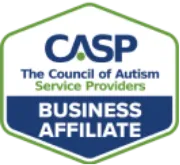Over the last few decades, major advancements in autism care and Applied Behavior Analysis (ABA) therapy have been made. But even with these improvements, too many Board Certified Behavior Analysts (BCBAs) and clinical autism teams face skyrocketing levels of burnout. Why?
These professionals chose a career in autism care to help families and kids—not to become experts at navigating red tape. Managing insurance approvals, keeping up with constantly changing requirements, and documenting everything requires a significant amount of time.
There’s good news, though. Feeling like you’re drowning under a stack of paperwork doesn’t have to be the norm. In this article, we dig into the why behind BCBA burnout and unearth solutions. Discover 10 tips to help fight ABA burnout and reclaim critical time to provide compassionate care.
Signs & Symptoms of BCBA Burnout
The National Library of Medicine characterises burnout in ABA practitioners as “exhaustion and disengagement.” When conducting a study with clinicians, they found that the BCBA burnout rate is skyrocketing: 72% of ABA providers were experiencing medium to high levels of burnout. That’s staggering.
If you work in autism care, it’s important to regularly check if you’re experiencing common burnout symptoms. According to Mayo Clinic, burnout warning signs can include:
- Questioning your own abilities or whether your work has value
- Dreading work and starting the day
- Feeling disconnected from your job and coworkers
- Low energy or exhaustion
- Hard to focus or find joy in your career
- Change in sleep habits or physical health
- Feelings of hopelessness and insignificance
- Using external sources to numb feelings
If you’re feeling any of these things, or your evenings and weekends have been taken over by report writing, it’s time to find solutions.
10 ABA Burnout Prevention Strategies
1. Set attainable boundaries for yourself
As an autism care partner, you’ve probably heard or read a lot about finding “work-life balance” and making time for “self-care.” At this point, these phrases might feel like unattainable buzzwords. How do you balance work and life when you have a waitlist a mile long and your work is interwoven with your well-being? And what does self-care look like when you’re trying to finish a report to get a child into ABA therapy that can change their life?
That’s a lot of pressure. But it’s not all on you. The work you do is vital, but it’s not on you alone to solve the autism diagnosis and care shortages. Take some time to reflect on realistic goals to achieve each week and month. Consider how many people you can see and reports you can complete while still taking care of yourself. Then set more accurate expectations on timelines with your families.
2. Let technology help with workload management
You could watch footage from sessions over and over again. Or you could use digital phenotyping technology to analyze eye movements, speech patterns, and interpersonal interactions to spot patterns and diagnose faster..
By using AI-powered software, you can spend less time in front of a screen and more time working with kids and families. This technology is available through many autism care partners and can save you significant time on assessments.
3. Outsmart Code 97151
One of the best ABA staff burnout solutions would be to change the requirements surrounding CPT code 97151. While that’s not possible today, it is possible to work faster within the 8 hours allotted for assessment and report writing.
New AI-powered technology makes it possible to create high-quality, insurance-ready reports in a fraction of the time.
4. Create intentional pauses in your schedule
When you’re racing against the clock to finish a report, it can feel like there’s not a second to eat, drink, or step away. But in the long run, you’re increasing the likelihood of BCBA burnout.
Reserve admin time for focused work and to take a brain break throughout the day. Here are a few ideas for pauses that support ABA therapist burnout reduction:
- Stand up and stretch for a couple of minutes every hour
- Take a break from screens while you eat
- Go for a walk over lunch
- Do a guided meditation between clients
- Call a friend to catch up
Clinicians should never have to choose between caring for kids with autism and caring for themselves.
5. Build community & get external support
You are not alone. A winning ABA burnout prevention strategy is to create connections with people who understand what you are experiencing. Schedule a coffee run with other clinicians. Ask your clinical supervisor for advice. Join a local club or activity.
Doing more, when you’re already feeling exhausted, may seem counterintuitive. But creating moments of connection and joy is critical for your long-term health and wellness.
6. Make a list of what you love about your job
If you’re experiencing BCBA burnout, you may feel disconnected from the parts of your job you once loved. Take some time to reflect on the tiny details of what you do and how they make you feel.
A long-term ABA staff burnout solution is to do more of what you love and less of what you hate each day. This may seem too good to be true, but it’s not. Advancements in technology mean there are lots of flexible solutions that can help you eliminate tedious tasks and streamline workflows.
7. Simplify insurance changes
Insurance is the culprit behind a lot of BCBA burnout. Reviewing insurer bulletins to stay on top of the latest payer policy updates, adapting to changing insurance requirements, and updating internal templates to match these changes is its own job.
If you want to see fewer authorizations get denied, get time back for your life, and stay focused on care without constantly second-guessing what’s changed, try one of these strategies:
- Split the responsibility: If you work with a team, see if you can divide and conquer. Split the work by week or month with another colleague, so it’s not always on you individually.
- Choose a technology solution: There are plenty of software options that can flag insurance updates in real time. Some will even update your workflows automatically.
8. Streamline assessment workflows & diagnostic reports
To decrease the BCBA burnout rate, we must use every tool available to work smarter. Technology will never replace caring clinicians with real-life experience, but it can help with the tasks that take up a lot of your time. The right technology can shave hours off of assessment writing by:
- Building reports dynamically as you assess
- Creating reusable content blocks for common goals
- Aligning templates with payer-specific requirements
- Automating common workflows and scenarios
You shouldn’t have to reinvent the wheel for every report. Smart automation can do the heavy lifting, so you can focus on clinical judgment and child-specific insights.
9. Celebrate every win—big and small
Questioning your impact? We’re here to remind you that the work you do matters. Every child you see, every family you talk to, makes a difference. If you’re thinking too high level, about all of the industry challenges in autism care, you may be missing the forest for the trees.
Spend time each week reflecting on your impact. Whether it’s making a coworker smile, answering questions for a family, or meeting your report goals, everything you’re doing deserves a little more appreciation.
10. Focus on longevity
Go on vacation. Plan a mental health day. Protect your evenings and weekends. Take care of yourself now, or you might find yourself searching for a new career. A common outcome of prolonged BCBA burnout is leaving the field.
If you want to stay in this career long-term and help the most families, you’ve got to think big picture about what will make it possible for you to continue this work for years to come.
Remember, helping just one kid has a ripple effect across families and communities.
Partner For ABA Burnout Prevention
If you’re trying to solve the autism diagnosis and care crisis alone, you are guaranteed to experience burnout at some point. The work you do is life-changing, but the weight of the industry challenges is not yours alone to solve.
With the right partner, you can focus on providing compassionate care and let technology and external support streamline and simplify tedious tasks. That’s where we come in. Book a demo today to see how our solutions help you ditch the late nights and rediscover joy in what you do.



